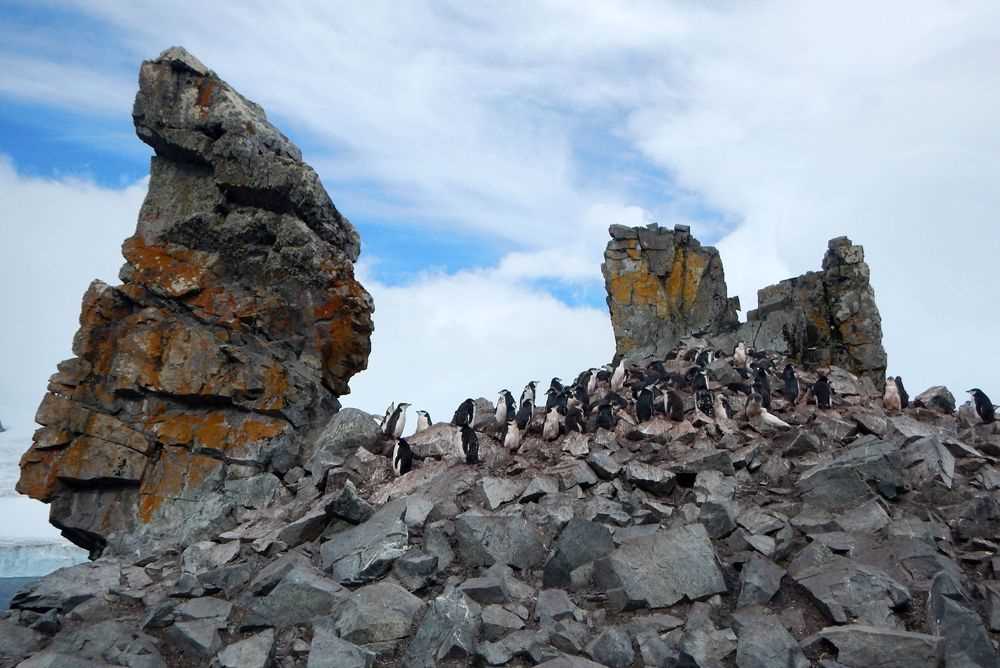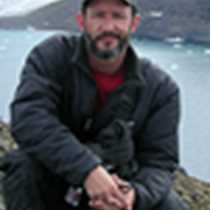The National Geographic Explorer made her way last night back to the South Shetlands Islands which lie offshore of the peninsula of Antarctica. Our last stop on land would be at Half Moon Island, a small island next to Livingston Island which is one of the largest in the South Shetland chain. This small island is home to one of the many older Argentine science bases that are no longer used as much as they once were. We spoke quickly to some personnel who were on the base and they said it would be all right to make our excursion on the island. About 60 of us wanted to do a longer hike on the crescent-shaped island. We were dropped off first and made our way up to a higher vantage point in order to get a view of the surroundings. We also saw numerous skua adults and chicks who nest at this altitude. The adult skuas find eggs and baby penguins to feed their baby chicks. Once we descended back to the tombolo of loose rock that the base was built upon, we made our way around to the chinstrap penguin colony that is amongst the towering rocks of the southern part of the island. Along the way there were numerous Antarctic fur seals, all males from the sightings, that were sparing with each other. Once these younger males become breeding adults they will fight with each for access to females during the breeding season. The views of the chinstrap penguins were good as the few adults were feeding some of the chicks just before they left the colony to molt their feathers.
Once we were back on board through the windy conditions the ship was repositioned to Sally Rocks to try and make another landing. However, the conditions were not ideal with the swell, wind, and seaweed on shore so the staff decided to cancel the landing and the ship was taken back to Deception Island for a quiet afternoon and dinner. From here we headed north into the Drake Passage on our way to South America.







